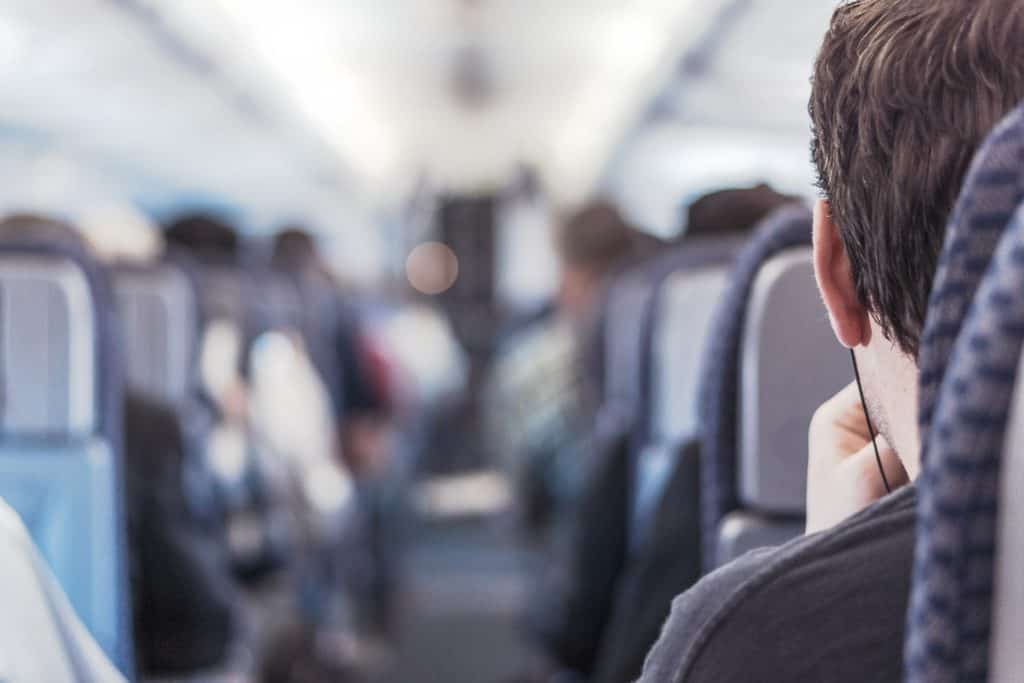
Everyone who has ever boarded a flight that lasted more than six hours will know that it’s not easy to stay sane. After all, you’re flying in a big metal bird at an altitude of over 10 km. However, there are some things you can do to make your stay in the metal bird more enjoyable – or at least less horrible. This is how to survive a long-haul flight.
How to stay sane during a long-haul flight
In this post:
- Keep airline regulations in mind
- Bring a sleeping kit
- Don’t pack too much
- Bring your own snacks
- Bring electronics
What to do during a long flight
- Sleep it off
- Relax
How to stay healthy on a long-haul flight
- Move around
- Stay hydrated
- Avoid DVT
How to stay comfortable on a long flight
- Wear comfortable clothes
- Consider premium economy
- Book flights with better flying hours
How to rock cabin baggage
If you take some small measures to change your cabin baggage around, you’ll go a long way to making your long-haul flight more pleasant. You just need to make sure to pack the right things in your cabin bag. After all, you don’t want to end up on a 12-hour flight only to realise that you’ve left your headphones in your checked baggage.
Also, don’t pack liquids over 100 ml. Just don’t.
Keep airline regulations in mind
I don’t care about airline regulations, I want to skip ahead
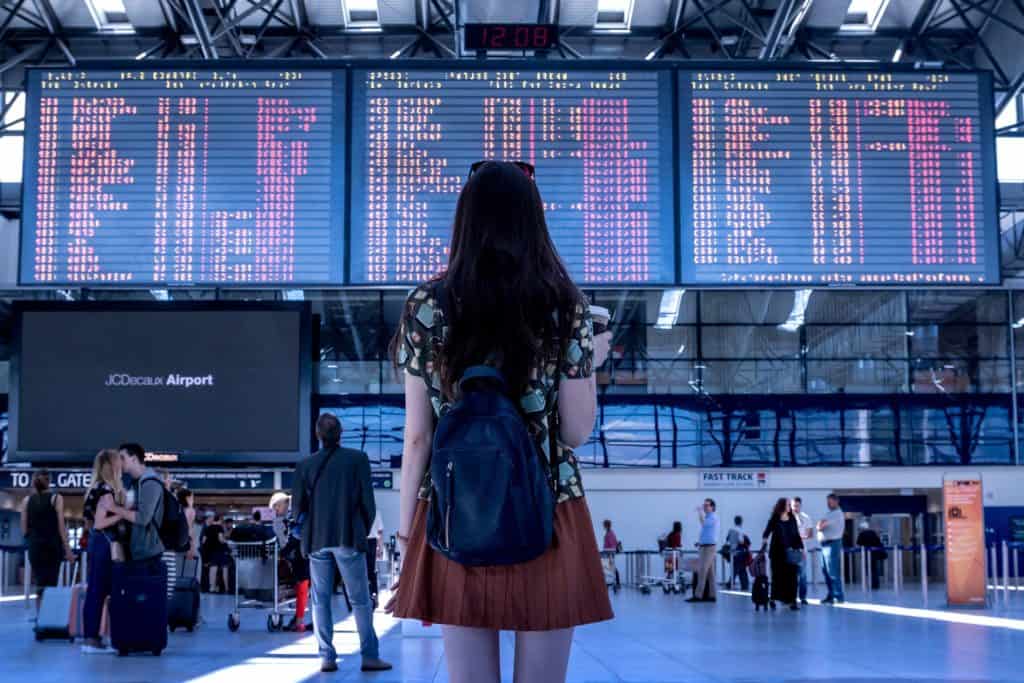
All airlines have regulations around cabin baggage. These policies usually regulate the maximum allowed size for your cabin baggage as well as the maximum weight.
Most traditional airlines usually stick to the following dimensions for cabin baggage: 56 x 45 x 25 cm. However, as more low-cost airlines pop up and become more popular, it’s important to keep in mind that these airlines tend to save money by using smaller maximum baggage dimensions and charging more for bags that don’t fit those dimensions. For that reason, you have to be extra cautious when you’re booking a flight with one of those low-cost carriers, because the extra fees can end up taking a considerable bite out of your budget.
For your convenience, here’s an overview of the cabin bag dimensions and max weight for most major low-cost carriers.
Disclaimer: this post was written and uploaded on 14 December 2018. This information may be outdated by the time you’re reading this. These regulations and policies reflect a passenger travelling in economy class or the carrier’s equivalent.
Ryanair
On Ryanair flights, you’re only allowed to bring one small personal bag (max. 40 x 20 x 25 cm) into the cabin, which must fit under the seat in front of you. For £6, you can add priority boarding and one more cabin bag (max. 10 kg), which can be stored in the overhead bins (providing the other bag fits under the seat). For £8, you can add a checked bag (max. 10 kg) which you must drop off at the check-in desk at the airport.
Bringing another bag that you haven’t paid for or bringing a bag that is too heavy will result in a £25 fee one way.
Vueling
Vueling flights allow you to bring one piece of hand luggage (max. 55 x 40 x 20 cm, max. 10 kg). This bag can be stored in the overhead bins. You’re also allowed to bring another small bag or case (max. 35 x 20 x 20 cm) as well as a bag with purchases made at the airport. Both of these must fit under the seat in front of you.
If your bag is too heavy, too big or you bring too many bags, you will be charged €35 one way.
Norwegian Air
Norwegian Air travellers are allowed to bring one carry-on bag (max. 55 x 40 x 23 cm) and one small personal item (max. 33 x 25 x 20 cm) that fits under the seat in front of you. The combined weight of these two bags must not exceed 10 kg.
The fees for oversize or overweight baggage are steep at Norwegian. They can be seen in the screenshot below (and yes, that’s just one way).
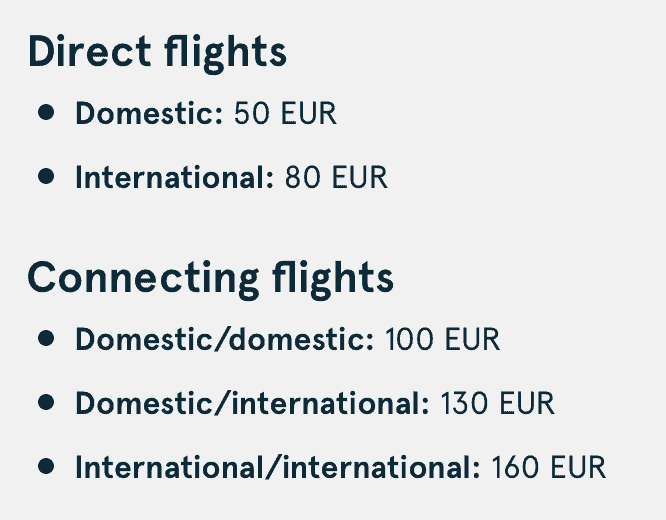
JetBlue
JetBlue allows its passengers to bring one carry-on bag (max. 55 x 35 x 22 cm) and one small personal bag (max. 43 x 33 x 20 cm) on board. There is no weight restriction on carry-on baggage on JetBlue flights.
I was unable to find information online about fees for oversize cabin baggage on JetBlue flights.
Southwest Airlines
Southwest passengers can bring one carry-on bag (max. 60 x 40 x 25 cm) and one personal item (max. 46 x 34 x 21 cm) that fits under the seat in front of you. There is no specified weight restriction for cabin baggage on Southwest flights.
I was unable to find information online about fees for oversize cabin baggage on Southwest flights.
easyJet
On easyJet flights, you can bring one carry-on bag (max. 56 x 45 x 25 cm, including wheels and handles). There are no weight restrictions but you must be able to lift it into the overhead locker, according to easyJet’s website.
If your carry-on baggage doesn’t fit in the size restrictions at the bag drop desk, you will be charged £37 to check the bag into the aircraft hold. If you only realise your bag is oversized at the boarding gate, you will be charged £47.
Wizz Air
Wizz Air allows its customers to bring one carry-on bag (max. 40 x 30 x 20 cm, max. 10 kg) which should fit under the seat in front of you.
Wizz Priority travellers can also bring one extra trolley bag (max. 55 x 40 x 23 cm, max. 10 kg). Wizz Priority can be purchased online (€5 – €15) or at the airport (€25) and it’s non-refundable.
I was unable to find information online about fees for oversize or overweight cabin baggage on Wizz Air flights.
Bring a sleeping kit
Now that all the boring stuff about baggage allowances, policies and regulations is out of the way, let’s take a look at what else you can do to make your cabin baggage more useful for a long-haul flight.
Though there are definitely similarities between the two, surviving a long flight is a little different from surviving a short flight. One of those differences is that you’ll probably want to be asleep for a portion of the long flight.
You can take some precautions and bring some items to make falling asleep on a noisy flight easier.
If you pack a decent sleep mask, some earplugs and a travel pillow, your odds of actually getting some sleep are already way better than that guy who’s trying to fall asleep with a sweater as a pillow.
Yes, that was me on my way from Frankfurt to Osaka. I’ll happily admit I wasn’t prepared for my long flight.
Don’t pack too much
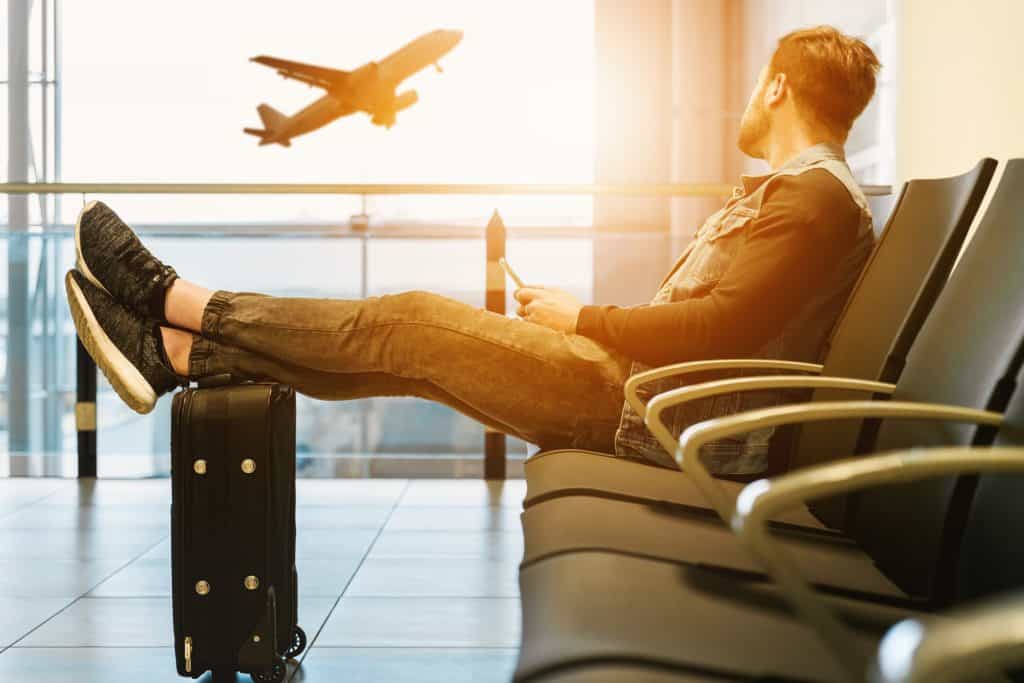
If you’re travelling with cabin baggage only, by all means, get as close to the weight limit as you can. However, if you also have a checked bag, you should consider keeping your cabin baggage as light as possible.
Now, I’m not saying that you can’t get away with throwing some clothes in a trolley that you use as hand baggage. I’m specifically talking about your ‘personal item’ here, assuming the airline you’re flying with allows you to bring one.
Only pack the essentials in your backpack / purse / whatever you’re using as personal item (keep reading to find out what the essentials are). The reason for this is that your personal items has to fit under the seat in front of you while you’re flying. So, the bigger your bag is, the less legroom you have.
And personal space really isn’t something you want to compromise on during a long flight, is it?
Bring your own snacks
On the one hand, anyone who has ever been on a long-haul flight will be able to confirm that airplane food is, well, not the best. Especially in economy class. Granted, it gives you precisely the amount of nutrients you need to survive the flight, but let’s just call it what it is: airplane food is bad.
By the way, did you know that airplane food uses up to 30% more sugar or salt to make it taste like it would on the ground?
On the other hand, you don’t want to get a sugar rush after eating too many sweets, only to feel drained and puffy shortly afterwards.
The perfect solution for this problem is to bring your own snacks, but not just any snacks: to survive a long flight, you’ll need some slow-energy release snacks. These contain healthy carbohydrates that slowly release the energy to the body over a longer period of time.

Some examples of excellent snacks to bring on a long flight:
- Bananas
- Nuts
- Pumpkin seeds
- Cereal bars
- Dried fruits
Bring electronics
Nowadays, most planes that carry out long-haul flights are equipped with personal sockets for every passenger. That’s excellent news for the digital-style traveller, who spends his or her time listening to music and playing games on an iPhone.
Some essential electronics to bring on your flight:
- Smartphone
- Tablet
- Laptop
- Headphones (earbuds are usually a better option than over-ear headphones, since they’re more comfortable for long periods of time)
- Chargers
- Portable battery pack
- Kindle
Of course, I’m not saying you won’t survive a flight without all of these. Adjust the list according to your own taste and travel style.
What to do to survive a long-haul flight
What to do, what to do… Here are some things that will help you survive the boredom of a 12-hour flight.
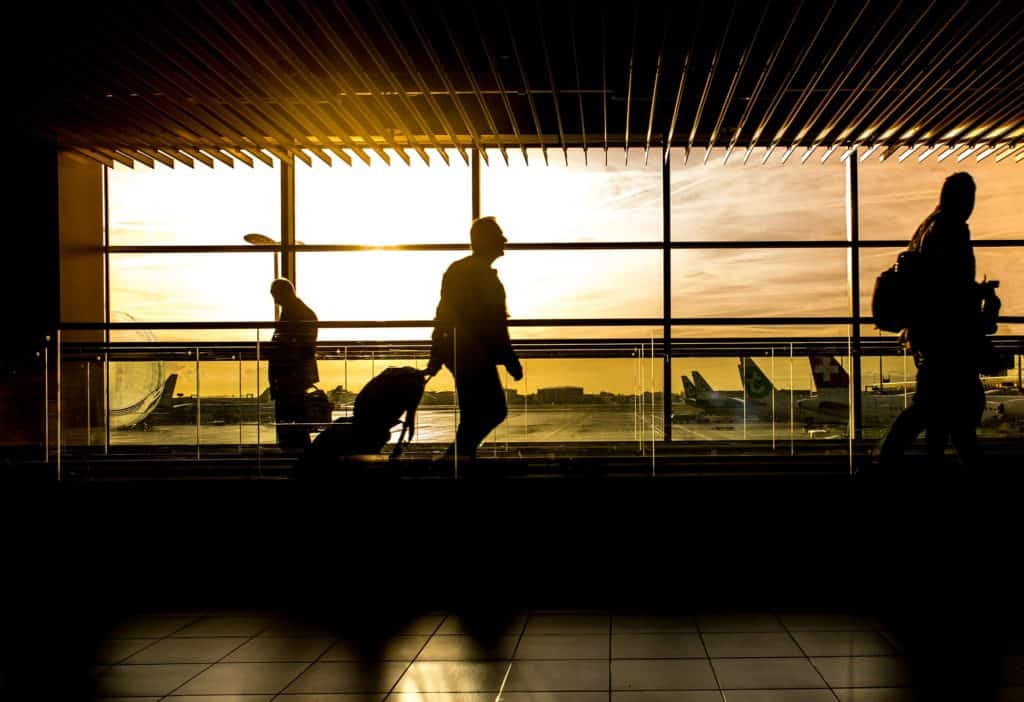
Sleep it off
Chances are that your flight has some kind of night-time in it. Whether it’s night-time at your take-off airport, night-time in the time zone you’re arriving in, or something in between. Admittedly, the quality of sleep you’re likely to get on a plane isn’t going to be very high. But if there’s ever a time you can justifiably sleep to fight boredom, it’s a long-haul flight.
If you’re going to sleep on a plane – which isn’t an easy task, admittedly – you’ll have to be prepared to sleep. Obviously.

Bringing your own sleeping kit (remember: sleep mask, earplugs, travel pillow) to a long flight will go a long way to helping you sleep. Other than that, coming to the airport fairly well-rested also helps. I know, it seems counterintuitive, but trust me on this one.
Now, all that’s left for you to do is close your eyes and doze off. Sweet dreams!
Relaxing
Okay, so maybe you don’t feel like sleeping. Or your flight isn’t exactly at a time when you should be sleeping. In that case, sit back and relax, because there’s really nothing else worthwhile for you to do.
Here are some simple tips to help you fight boredom on a long-haul flight:
- Watch a movie or a TV show. Nowadays, many airlines have inflight entertainment systems that are fully decked out with tons of good (or decent, at least) movies and TV shows of a variety of genres. If nothing on there tickles your fancy, you can also just bring your own tablet or laptop loaded with your favourite movies.
- Read a book. Now’s the time to finish (or start) that one book that’s been collecting dust on your shelf for months. You’re not getting this travel time back, so you might as well do something useful with it.
- Listen to music. You can download your favourite Spotify playlist or podcast on the airport wifi before taking off, and end up with hours of tunes to keep you company.
How to stay healthy on a long flight
There are many things that can go wrong on a long flight, but you can only control so much. One of those things you are in control of is how much the airplane influences your health. Here are some tips to help you stay healthy during a long-haul flight.
Move around
One of the most common tips for people on a long-haul flight is to move around. If you’ve never been on such a flight before, you might think it’s weird to just get up in the middle of the flight, but it really isn’t. People move around all the time, and if you’re just taking a walk to get your blood flow going again, nobody is going to give you any weird looks.
Stand up and walk around the aisle at least every two hours. This will help you fall asleep more easily and it will prevent blood clots.
Other than that, you can also do small exercises in your seat if you don’t feel like getting up or if you’re stuck in a window seat and the passenger next to you is fast asleep. Here’s a list of easy exercises to do on an airplane.
One last consideration to make on a long-haul flight is whether you want a window seat or an aisle seat. A window seat, on the one hand, will graciously allow you a chance to fall asleep without being disturbed by other passengers. You’ll also be able to look outside more easily, if that’s what you’re into. An aisle seat, on the other hand, gives you more leg room and easier access to the aisle in case you want to get up or go to the bathroom.
In the end, it all comes down to personal preference and priorities.
Stay hydrated
As you’ve probably realised by now, flying dehydrates you. The air circulation system in an airplane causes the humidity to be around 10-20%. Compare that to the regular 30-60% on the ground and you’ll know why you need to keep drinking water.
Professionals recommend you drink about 250 ml (8 oz) of water for every hour you’re in the air. Also, if you can help it, avoid any kind of alcohol. It tends to dehydrate the body as well, however counterintuitive that might seem.
Prevent deep vein thrombosis (DVT)
Deep vein thrombosis (DVT) is the formation of blood clots in deep veins, such as the ones in your legs. It doesn’t always come with visible symptoms, but if it does, these are the most common ones:
- Swelling in the foot, ankle or leg (usually on one side)
- Cramps and pain (usually starts around the ankle)
- A patch of skin that’s glowing and feels warmer than the skin around it
- A patch of skin that turns pale, red or blue
Since sitting on an airplane for extended amounts of time (ahem, such as a long-haul flight) slows the blood circulation, it increases the risk of DVT.
Some things you can do to prevent DVT on a long flight:
- Stand up and move around as often as possible
- Avoid wearing clothes that are too tight
- Avoid crossing your legs
- Stretch your legs and ankles while seated
- Invest in compression socks if you feel you’re still at risk of developing DVT
How to stay comfortable on a long-haul flight
Now. You’re staying healthy, you’re not drinking too much alcohol, you’ve got your movies ready to be binged and you feel like you can sleep for hours.
How do you stay comfortable for a long amount of time with relatively little space to move around? Well, here’s how.
Wear comfortable clothes
This goes without saying, really. If you want to be comfortable on a long flight, you’re going to have to wear comfortable clothes. I’m thinking simple shirt, sweatpants, sweater and sneakers. How’s that for a comfortable alliteration, huh?
Of course, you might have to compromise on your fashion sense for this plane ride, although some people want to convince you otherwise. I’d say the sacrifice is more than worth it if it means you’ll get a more enjoyable flying experience in return.
Consider premium economy
If you’re really worried about not getting the comfort you need in economy class, why don’t you consider upgrading to premium economy (or even business class)?
There are quite a few ways to score an upgrade to premium economy.
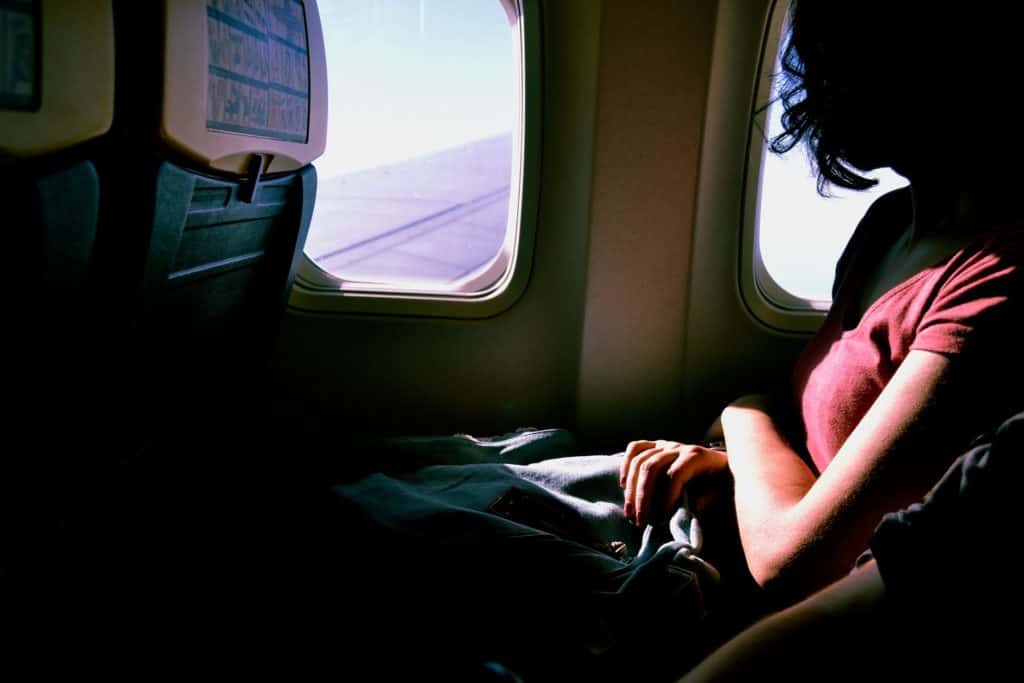
The first, and most efficient, is to save up air miles and pay for the upgrade with the miles you’ve collected. The general rule for most airlines is that you use your airline miles to upgrade one class from your original ticket. That means that you can upgrade to premium economy with an economy ticket or upgrade to business class with a premium economy ticket.
For more information on how to upgrade using air miles, just google “[Airline name] upgrade with miles”, as the rules are different for each airline.
You could also just pay for an upgrade if you feel like it’s worth it. In other words, if the value you attach to upgrading from economy to premium economy is greater than the price you’re paying for the upgrade, you should do it.
Many major airlines use a platform called Plusgrade that allows passengers to bid for an upgrade. It’s essentially like a blind auction, where you don’t know how many other people are bidding for the same thing and you have no idea how much they’re willing to fork over for that same upgrade. Keep in mind that there are many terms and conditions for auctions like these, so it’s a good idea to read up on your specific airline before participating.
If your flying time is flexible, you might want to consider volunteering to take a later flight.
Since airlines nowadays regularly overbook flights to compensate for empty seats left by passengers who don’t show up, you might be bumped from a flight.
What this means is that the airline will look for volunteers to take a later flight. At first sight, this might seem like a bad deal, but once you learn that it comes with advantages like lounge access, upgrades and flight vouchers. In the United States, new Department of Transportation rules state that airlines need to pay passengers that were involuntarily bumped up to $1,300.
Still think being bumped off a flight is such a bad thing?
Book flights with better flying hours
As a budget traveller, you might think cheaper is always better. Well, I’m here to tell you – drumroll – it’s not. Finding cheap transport is fun and can be very useful, but sometimes it’s better to spend a little more money for a better flight.
Although you might pay a bit more for a flight with better hours, you’ll save time. No, you won’t have a shorter flight, but what you will do is spend less time recuperating from your long-haul flight. This means that you’ll have more time on the ground to deal with jet lag.
Have you ever been on a long-haul flight? What was your experience like? How many of these tips did you use?
Thanks for reading!
-S
PIN IT!
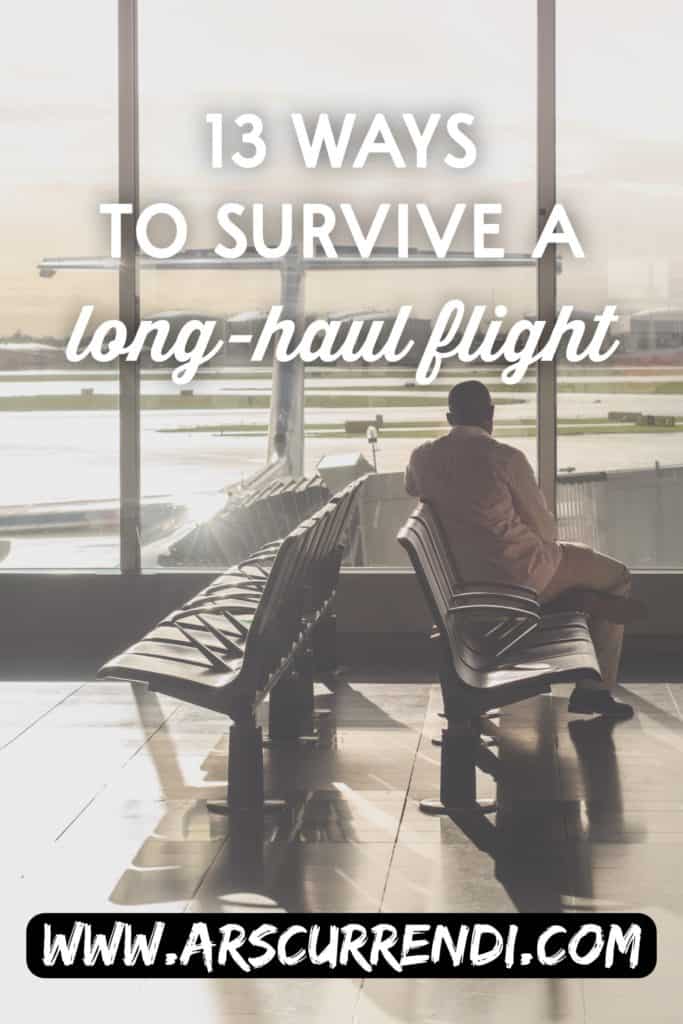
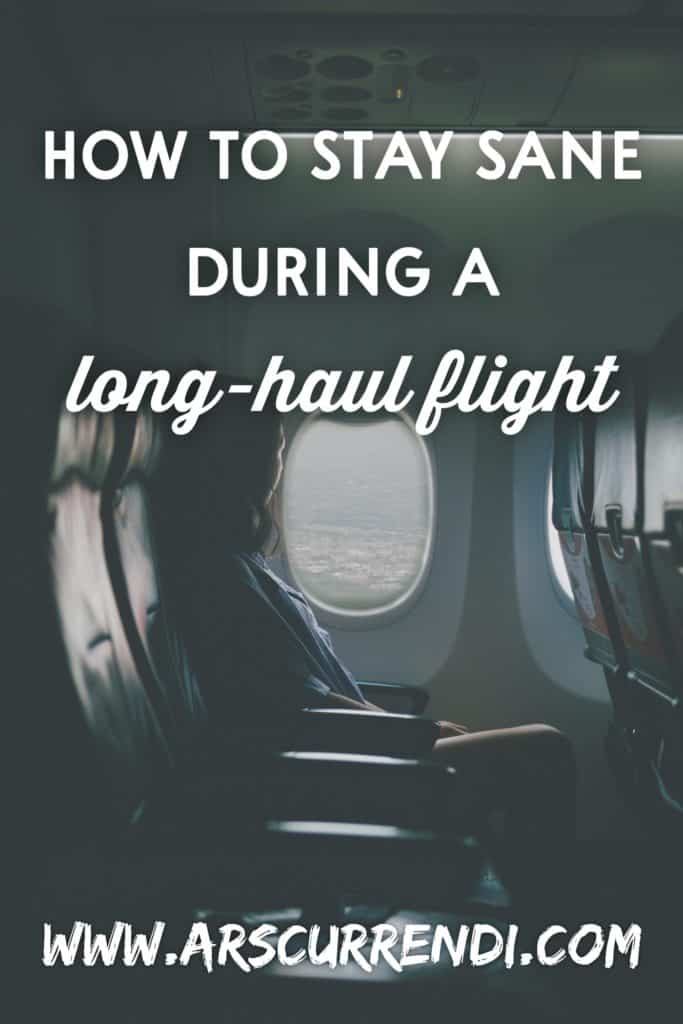








Crystal
December 16, 2018 at 8:39 pmGreat tips! Sleeping on a flight is my dream. I wish I could. Generally I will watch movie after movie until the flight is over. The staying hydrated thing is such great advice but I always disregard it so I don’t have to use those airplane bathrooms – I should really stick to your advice though – for health!
Sander
December 22, 2018 at 2:22 pmYou gotta stay hydrated! Not only is it healthy for you, but it will also make you feel a lot better. Thank you for your comment, Crystal!
Michelle
December 17, 2018 at 11:22 pmSome great tips here- I have flown from Australia to Europe quite a few times and try to sleep as much as possible at the new Timezone times, drink plenty of water (zero alcohol) and wiggle my ankles a lot 😉 Also remember not to take fruit and nuts into Australia – it’s illegal ( be prepared for sniffer dogs to pull you up even if you have had fruit in your bag and since eaten it 🙂
Sander
December 22, 2018 at 2:23 pmIs Australia really that strict about food entering the country? I didn’t know that! Glad to see you enjoyed this post. Thank you for your comment, Michelle!
13 Ways to Keep Your Sanity During a Long-Haul Flight | Traveling Sapiens
December 8, 2021 at 9:42 am[…] This article was originally published on Ars Currendi. […]